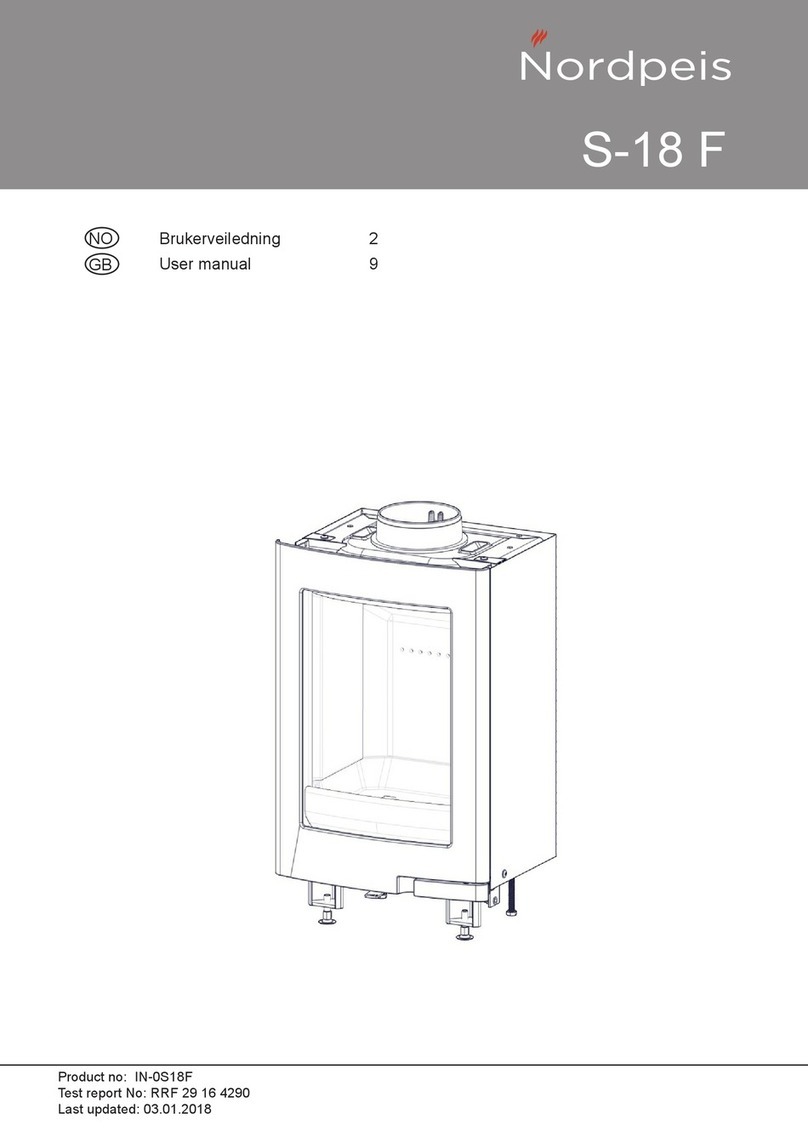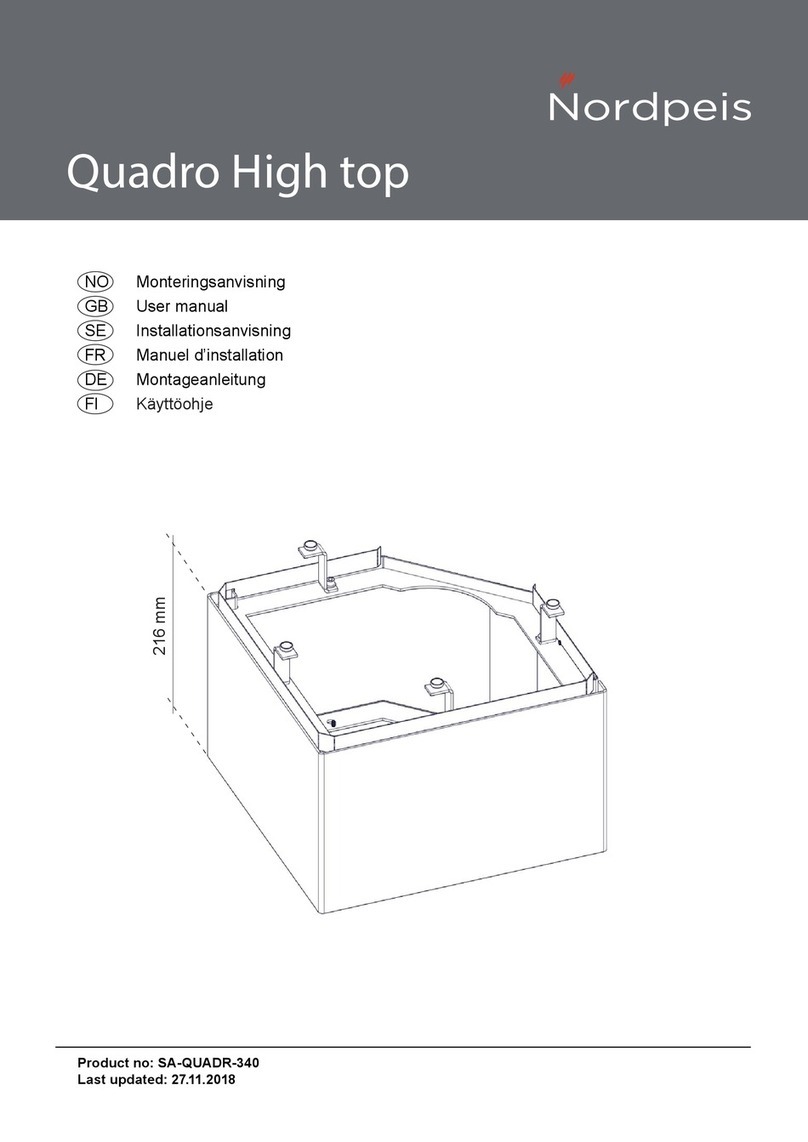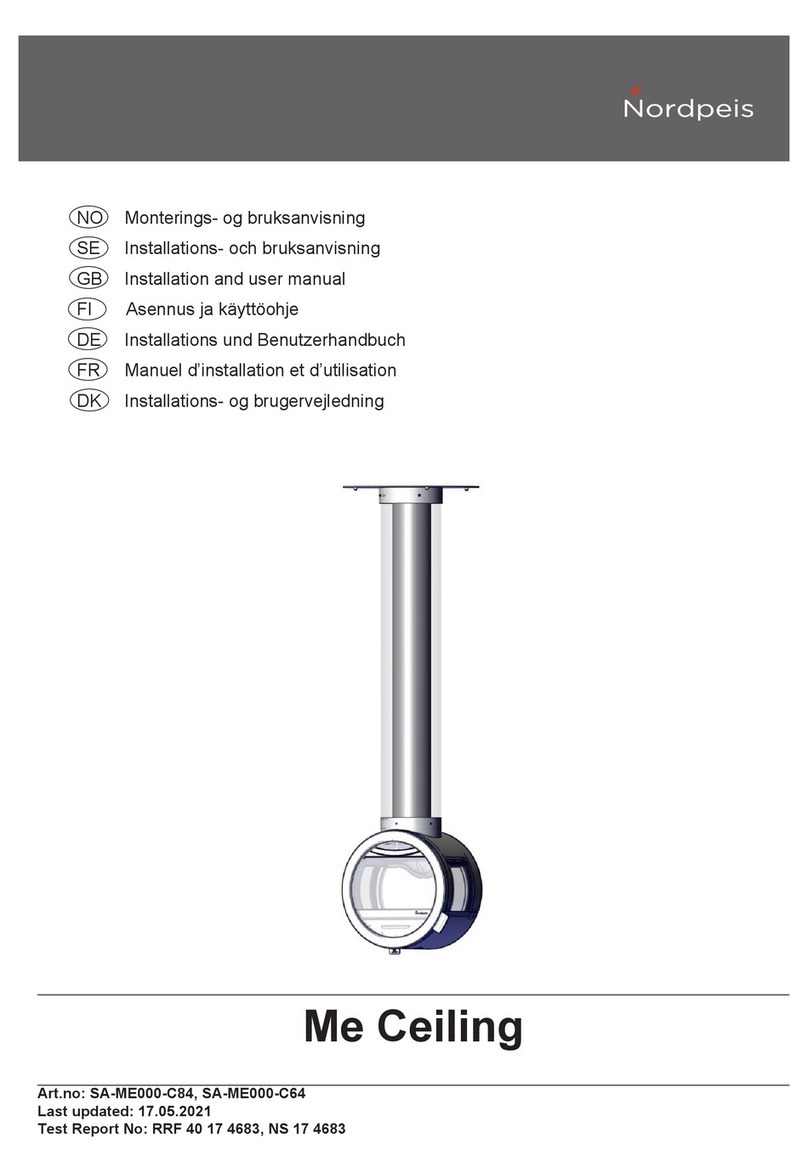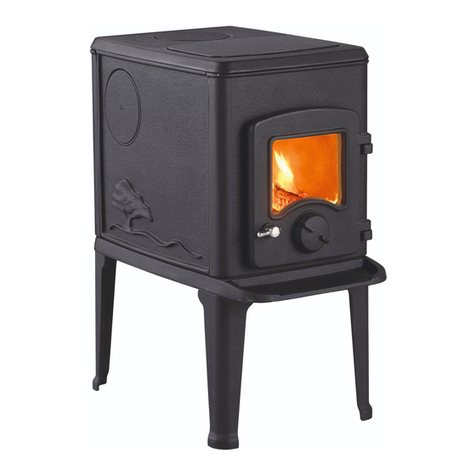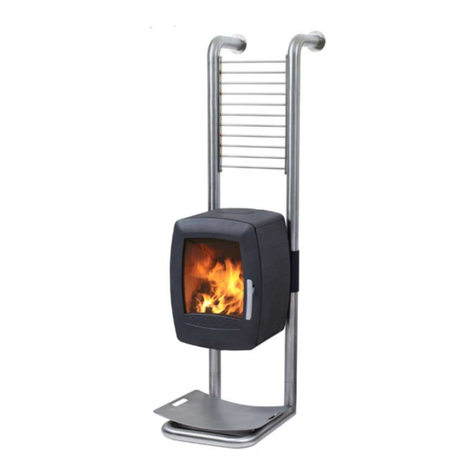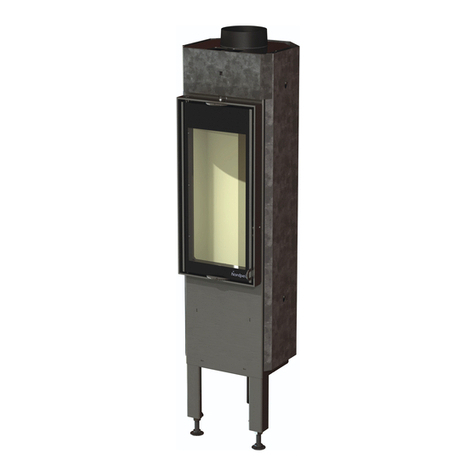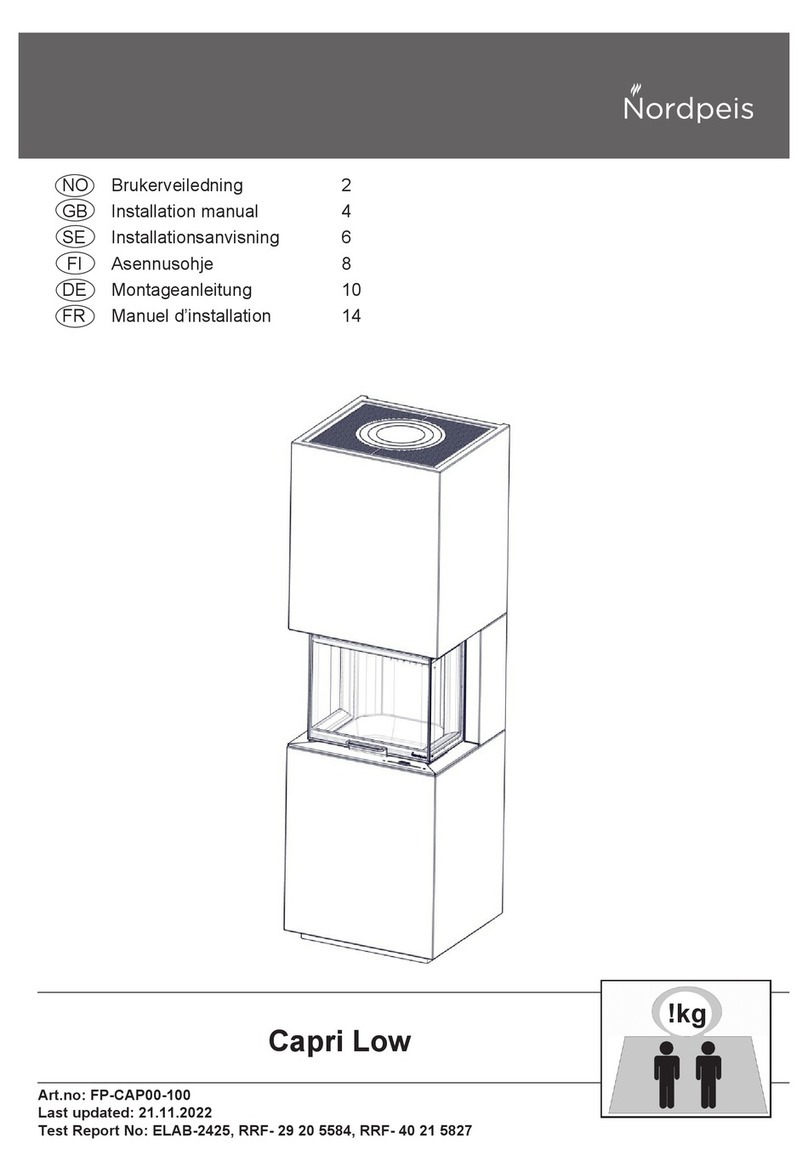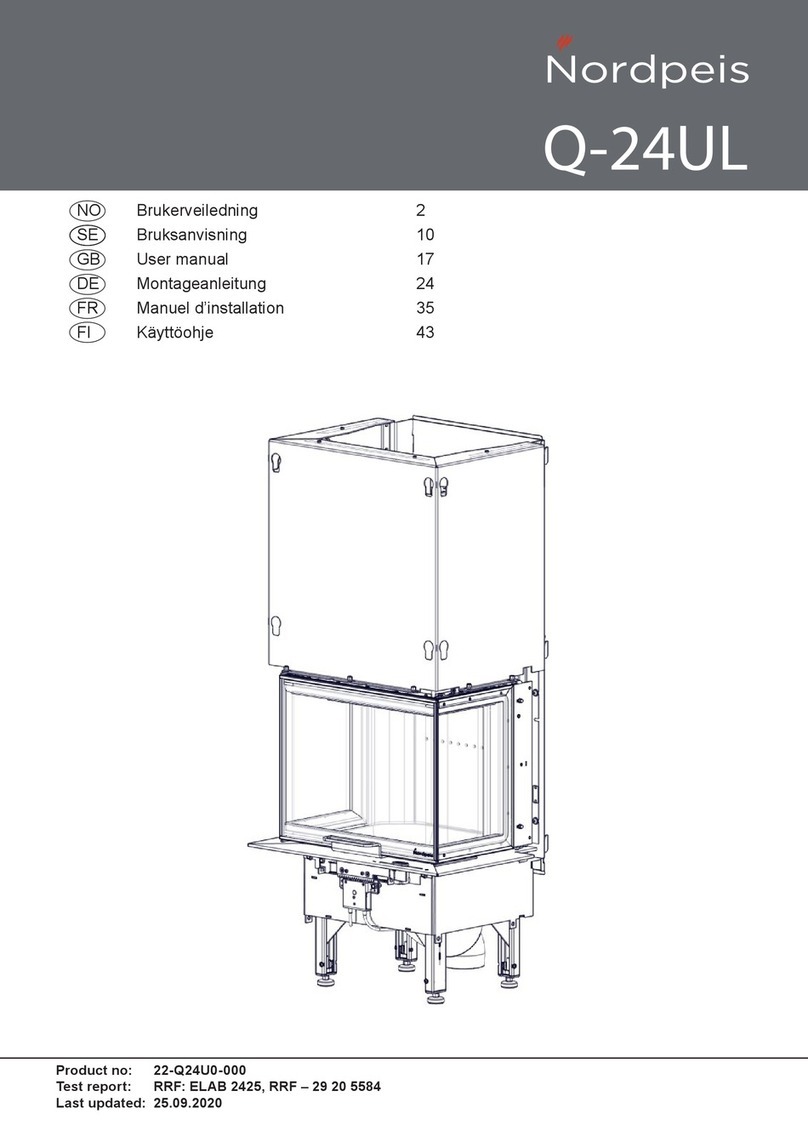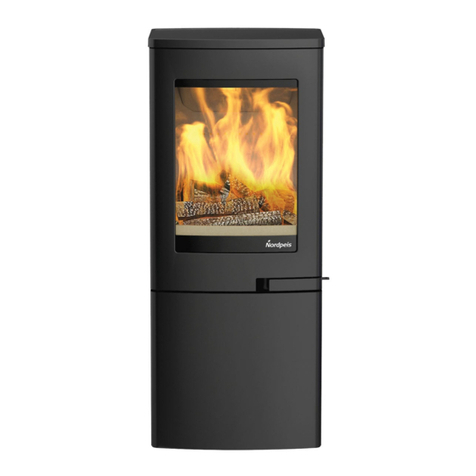13
GB
Please note: Wood logs that are too long can cause
strain and crack the plates, due to the tension created
between the side plates.
Please also note that the Thermotte plates may release
coloured dust when touched. Avoid touching any cast
iron parts with dust on your ngers. Any visible dust
on cast iron can be brushed off with the glove that is
included.
Door and glass
Should there be any soot on the glass it may be
necessary to clean it. Use dedicated glass cleaner.
(NB! Be careful, detergents can damage the varnish).
If different detergents are used they may damage the
glass. A good advice for cleaning the glass is to use a
damp cloth or kitchen roll paper and apply some ash
from the burn chamber. Rub around the ash on the
glass and nish off with a piece of clean and damp
kitchen roll paper. NB! Only clean when the glass is
cold. Check regularly that the transition between the
glass and the door is completely tight. Possibly tighten
the screws that hold the glass in place - but not too
hard, as this can cause the glass to crack. Periodically,
it may be necessary to change the gaskets on the door
to ensure that the burn chamber is air tight and working
optimally. These gaskets can be bought as a set
including ceramic glue.
Ceramic glass should
be disposed of as resid-
ual waste, together with
pottery and porcelain
CERAMIC GLASS
CANNOT BE
RECYCLED
Recycling of the ceramic glass
Ceramic glass cannot be recycled. Old glass, breakage
or otherwise unusable ceramic glass, must be discarded
as residual waste. Ceramic glass has a higher melting
temperature, and can therefore not be recycled together
with glass. In case it would be mixed with ordinary
glass, it would damage the raw material and could, in
worst case end the recycling of glass. It is an important
contribution to the environment to ensure that ceramic
glass does not end up with the recycling of ordinary
glass.
Packaging recycle
The packaging accompanying the product should be
recycled according to national regulations.
7. Warranty
For detailed description of the warranty conditions
see the enclosed warranty card or visit our website
www.nordpeis.com
8. Advice on lighting a re
The best way to light a re is with the use of lightening
briquettes and dry kindling wood. Newspapers cause a
lot of ash and the ink is damaging for the environment.
Advertising yers, magazines, milk cartons and similar
are not suitable for lighting a re. Good air supply is
important at ignition. When the ue is hot the draught
increases and door can be closed.
Warning: NEVER use a lighting fuel such as
petrol, karosine, alcohol or similar for lighting
a re. This could cause injury to you as well
as damaging the product.
Use clean and dry wood with a maximum moisture
content of 20%. The wood should be dried for a
minimum of 6 months after it is cut. Humid wood
requires a lot of air for the combustion, as extra energy/
heat is required for drying the humid wood and the heat
effect is therefore minimal. This in addition creates soot
in the chimney with the risk of creosote and chimney
re.
Storing of wood
In order to ensure that the wood is dry, the tree should
be cut in winter and stored during the summer, covered
and in a location with adequate ventilation. The wood
pile must never be covered by a tarpaulin lying against
the ground as the tarpaulin will then act as a sealed lid
that will prevent the wood from drying. Always keep a
small amount of wood indoors for a few days before
use so that moisture in the surface of the wood can
evaporate.
Usage
Not enough air to the combustion may cause the glass
to soot. Hence, supply the re with air just after the
wood is added, so that the ames and gases in the
combustion chamber are properly burnt. Open the air
vent and have the door slightly ajar in order for the
ames to establish properly on the wood.
Note that the air supply for the combustion also can
be too large and cause an uncontrollable re that very
quickly heats up the whole combustion chamber to an
extremely high temperature (when using with a closed
or nearly closed door). For this reason you should never
ll the combustion chamber completely with wood.
It is recommended to keep an even re with a small
amount of wood. Too many logs put on hot ember, may
result in combustion air starvation, and the gases will
be released unburnt. For this reason it is important to
increase the air supply just after adding logs.
Choice of fuel
All types of wood, such as birch, beech, oak, elm, ash
and fruit trees, can be used as fuel in the insert. Wood
species have different degrees of density - the more
dense the wood is, the higher the energy value. Beech,




